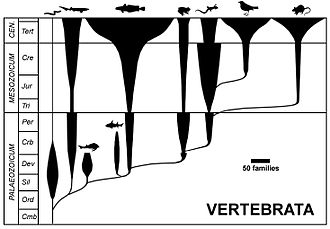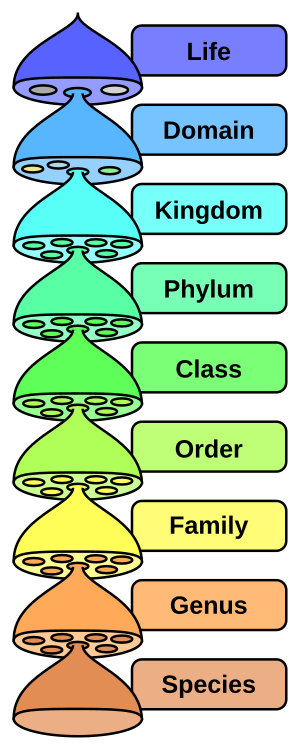Taxonomy (biology): Difference between revisions
CSV import |
No edit summary |
||
| Line 34: | Line 34: | ||
* [[Hierarchical classification]] | * [[Hierarchical classification]] | ||
<br> | |||
[[Category:Biology]] | [[Category:Biology]] | ||
[[Category:Taxonomy]] | [[Category:Taxonomy]] | ||
Latest revision as of 02:56, 28 October 2024






Taxonomy (biology) is the science of defining and naming groups of biological organisms based on shared characteristics. Organisms are grouped into taxa (singular: taxon) and these groups are given a taxonomic rank. The principal ranks in modern biological classification are domain, kingdom, phylum, class, order, family, genus, and species.
History[edit]
The practice of taxonomy dates back to ancient times, but the modern system of taxonomy was developed by Carl Linnaeus in the 18th century. Linnaeus introduced the system of binomial nomenclature, where each species is given a two-part name: the genus name and the species name.
Principles of Taxonomy[edit]
Taxonomy is based on several key principles:
- Hierarchical classification: Organisms are classified into a hierarchy of groups and subgroups.
- Binomial nomenclature: Each species is given a unique two-part name.
- Phylogenetics: The evolutionary relationships between organisms are considered in their classification.
Taxonomic Ranks[edit]
The main taxonomic ranks are:
Modern Taxonomy[edit]
Modern taxonomy uses a variety of data sources, including morphology, genetics, and biochemistry, to classify organisms. The advent of molecular phylogenetics has revolutionized the field, allowing for more precise classifications based on genetic information.
Importance of Taxonomy[edit]
Taxonomy is crucial for the organization of biological knowledge. It allows scientists to communicate about organisms using a standardized system and provides insights into the evolutionary relationships between different species.
Related Pages[edit]
- Binomial nomenclature
- Phylogenetics
- Carl Linnaeus
- Molecular phylogenetics
- Hierarchical classification
